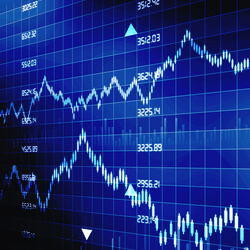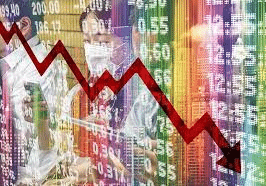
High frequency trading (HFT) is a subset of electronic/automated trading in that all or part of the activities does not involve human input. As the name suggests, this kind of trading is superfast, faster than any human could be. Allegedly, a human finger takes 150,000 microseconds to click a mouse. Now imagine a system that operates faster than this speed.
Before the advent of electronic trading in the 1990s, forex trading was slow. Besides, most (if not all) of the trading activities took place between dealers. The retail section of the foreign exchange (forex) market (where you belong) gained currency with the internet as the key enabler. Because electronic systems use special algorithms to make decisions and to execute orders, this kind of trade automation goes by the name algorithmic trading.
HFT explained
To understand HFT, one should know what algorithms are, and what constitutes electronic trading. As we have already seen, electronic trading is new in the whole business of forex. Specifically, the internet opened up new avenues for retail investors to join the fray. But, what is electronic forex trading?
The short answer is the use of electronics to analyze the market and to execute orders. Unlike the 90s where investors placed orders over telephone, algorithmic FX trading allows investors to command computers to do all these things. The system advanced so much that now we have forex expert advisors to provide trading signals.

Forex robots encompass all types of algorithmic trading. In the first place, the robot conducts a statistical analysis of the market using the best forex indicators for automated trading. The software combines fundamental and technical analyses and chart patterns analysis to find the most appropriate entry and exit points in the market. Secondly, the robot executes strategies such as auto-hedging, as well as enabling retail investors to access the forex market.
HFT, therefore, is a subcategory of automated FX trading. In HFT, the algorithms execute orders at high speeds. Additionally, the powerful algorithms gather and analyze huge amounts of data in a very short time. Firms and individual traders who use HFT systems can make trades within microseconds. Although each trade earns a small profit, the size of the returns grows exponentially after millions of trades in a single session.
Impact of HFT in forex
The demand for automated forex trading systems is on the increase because of the concomitant benefits. These systems make trades and market analyses at incredibly high speeds. In forex trading, an advantage of even a microsecond ahead of the market could mean all the difference in the world in terms of profits.
A major impact of HFT is an increase in the number of retail traders. One cannot overstate the significance of technology in allowing retail investors to participate in the forex market. Before the technology, few retail investors could enter the market because of lack of knowledge. Now, one does not need a sophisticated understanding of how the market operates. Instead, all one needs is access to powerful FX expert advisors that does all the legwork.
Another impact of HFT is the ability for investors to earn larger profits. As noted earlier, speed is the most important competitive advantage for forex investors. With a HFT system, one makes fast order entries, executes orders faster, and receives market data without latency. Coupled with the right forex charting tools, this combination is a winner.
Support for high frequency trading systems
Since it began to operate, HFT has received immense support from market participants. Specifically, there is consensus in the market that HFT provides requisite liquidity to the forex market. The forex market comprises numerous players looking for profit making opportunities. For example, a Forex Investment Fund (FIF) might want to trade currency for the benefit of its clients. Similarly, retail traders are looking for nice deals to fatten their accounts. All these players need access to buyers and sellers readily. Liquidity, therefore, is critical to the proper functioning of the forex marketplace.
The coming of HFT introduced more brokers and dealers in the forex market. Before that, competition was low and, as you can guess, transaction costs were punitive. Fewer brokers mean fewer opportunities to participate in the expansive marketplace. Naturally, access to forex products becomes lucrative and the brokers and dealers bump up the access fee. Entry of more dealers and brokers increased competition for customers, which led to lower transaction fees.
Critiques of HFT

Major arguments have been floated in support of dissent against HFT. Firstly, sections of the market participants argue that HFT heightened fragility of the forex market. Specifically, the claim is that HFT systems instigate unpredictably huge swings in the market. Lack of human-based decision-making and order execution, the dissenters argue, impedes true price discovery.
Secondly, dissenters argue that the speed at which HFT systems make trades impedes transparency in the market. Indeed, HFT systems can make billions of trades in a single session. As such, the possibility of accounting for all the trades when appropriate is unavailable. This way, there is a likelihood of an upsurge in deceptive trading practices.







Leave a Reply